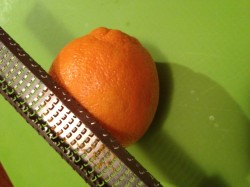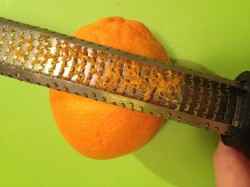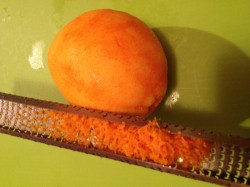How to Zest an Orange
 Pin It
Pin It
As you may or may not know, the zest of the orange comes from the outermost orange colored part of the skin. It contains all of the flavorful and aromatic oils. You might think zesting an orange, lemon, or lime is easy. Many people zest all wrong and include that nasty bitter part, called the pith. Here are a few import tips:
- One large orange should produce about 2 tablespoons of orange zest (an average lemon should produce about 1 tablespoon of lemon zest.)
- Wash your orange well before zesting to remove any waxes, dyes or pesticides.
- The tool you use will determine the texture: A microplane (which I recommend) will give you a very fine zest; a grater will give you a zest that is a bit courser, a vegetable peeler or knife will get you larger strips of zest. Note: the more finely grated the zest, the more the orange flavor will be. Your recipe will dictate what tool is best.
- To ensure you don’t lose the precious zest, do your zesting over a paper towel and then add to the mixing bowl.
- If sealed in a plastic bag, orange zest will keep in the freezer for up to six months.
Shown here is the very fine zest using a microplane or very fine grater.
Working over a towel or flexible cutting mat, take your microplane or fine grater and hold upright to catch the zest <as shown>. Just move the orange around, not the tool. Be careful not to zest in more than one layer and do not zest into the pith (white bitter part of the orange peel.)




























